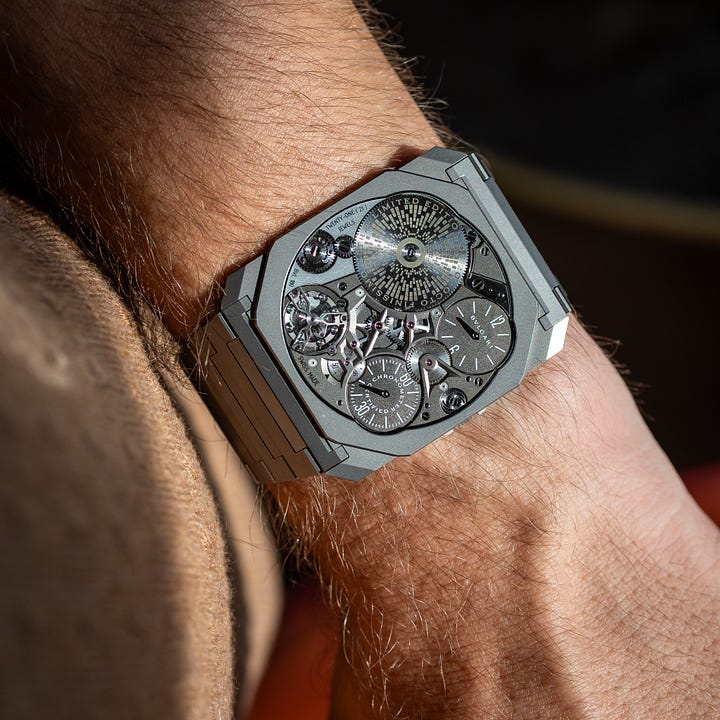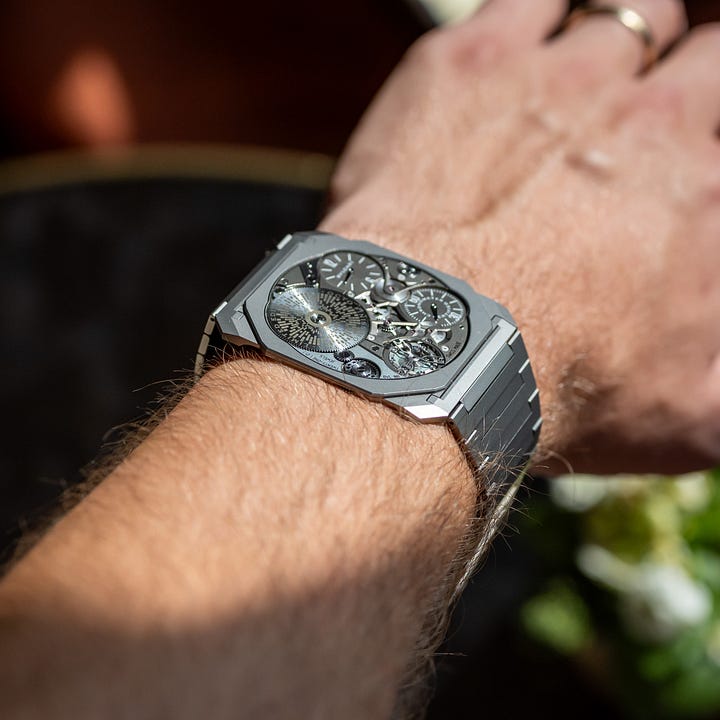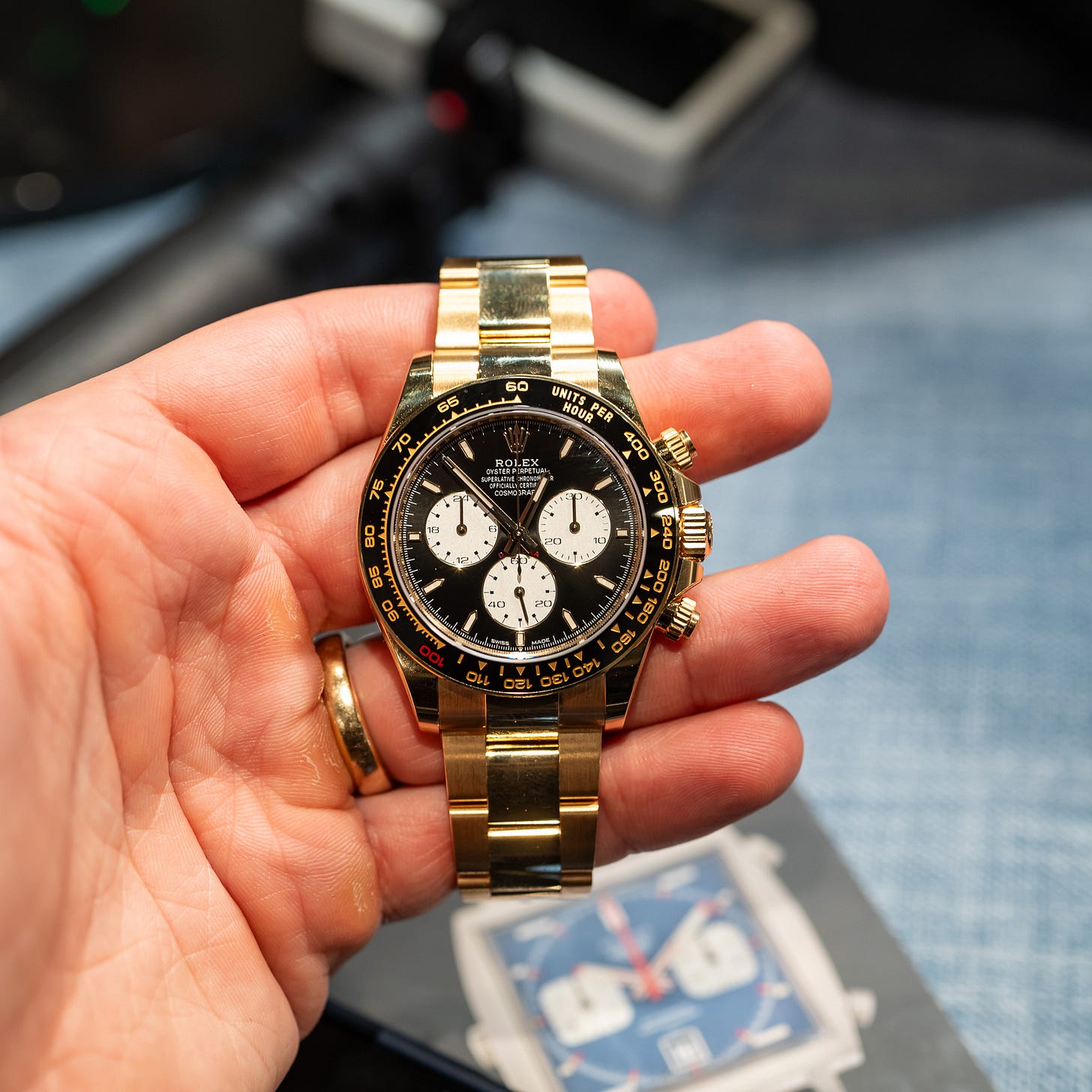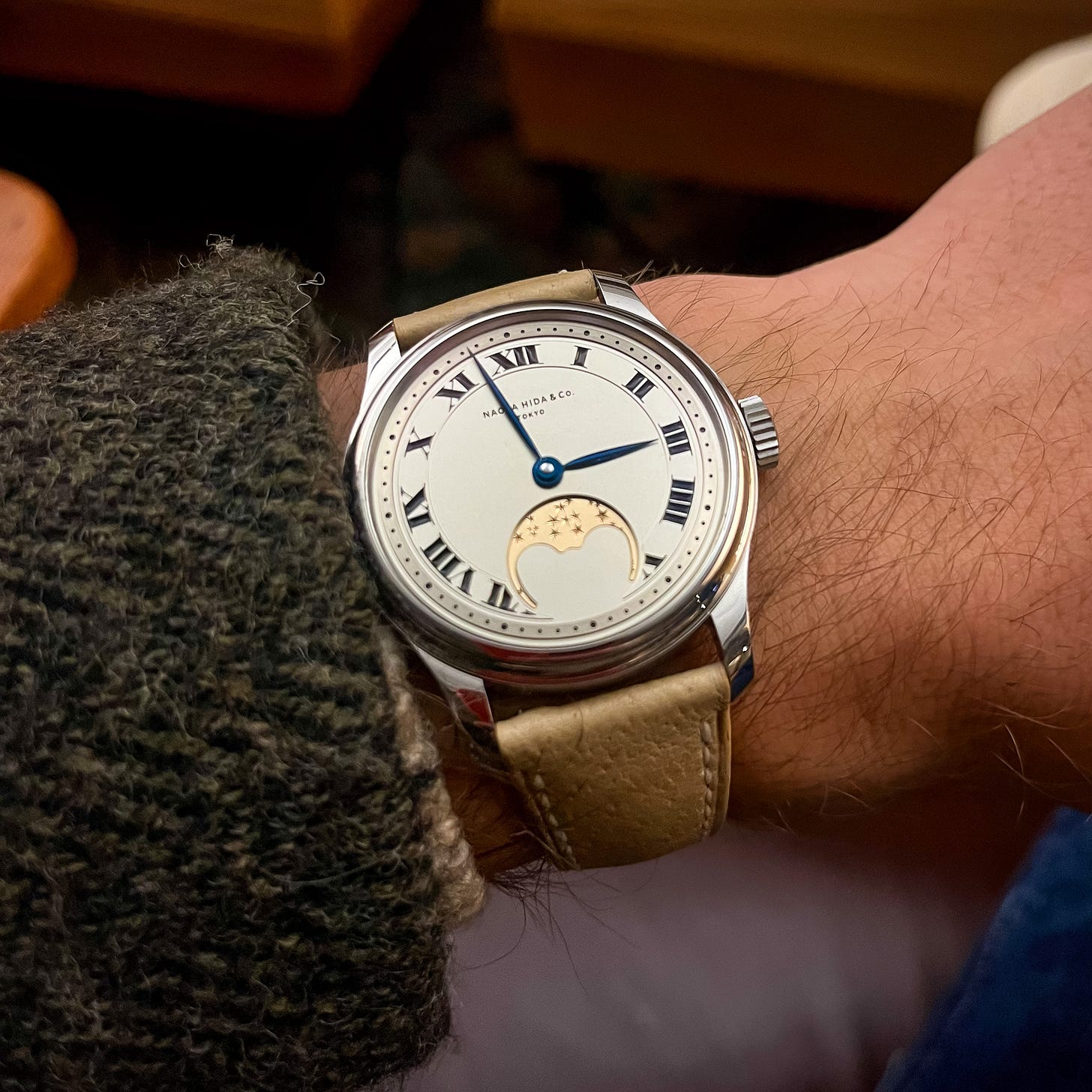Price Increases, Indie Allocation, and Getting Excited for 2025 | Q&A
Answering your questions; where to find a vintage Calatrava; a Watchlist full of classics.
Our recent Q&A touched on a lot of hot topics, so I’m bringing a few to the newsletter for longer answers: Rising prices, how you even get an indie watch, shopping for vintage Calatravas, and something to look forward to in 2025. Then, a Watchlist featuring classics from Rolex, Omega, and affordable Jaeger-LeCoultre before a Watch of the Week from Gallet.
We’ll do another subscriber-only Q&A in February, so make sure you’re a paying subscriber to get in on the action:
On price increases
Rafael asks: What are your thoughts on price increases? Rolex just increased across the board. Are more increases coming for other brands? How do brands justify increases when their watches are trading at discounts?
The problem isn't just rising prices, but that customers no longer see the value proposition of luxury watches.
Watch collectors are fine with buying expensive things; it even brings us joy. If a brand increased prices by 10 percent and we felt its watches were 10 percent better, we’d be more or less fine with that. Instead, the opposite has happened. Manufacturers have increasingly automated or industrialized the human touch out of their watches, and even still the watches sometimes don’t do what they say.
Broadly, quality hasn't improved despite these price increases. Movements aren’t updated.1 Hand-finishing is rare. Design feels stale and creativity is hard to come by.
Rolex has generally been the least aggressive with increases. It raised prices on gold watches by ~20%, but gold prices increased by about that much in 2024. Rolex raised steel prices by just $100 or $200 ($400 on the steel Daytona):
A steel Daytona cost $15,100 in 2023; now it’s $15,500.
A steel Submariner cost $8,200 in 2020; now it’s $9,100.
But other brands have put themselves in a tough position. As demand grew, brands increased prices, but now the rapid growth of watches means they’re oversaturated.2 Luxury promises exclusivity and craftsmanship, but customers feel this promise has been broken. So we turn to indies or vintage watches instead.


At the high end, I don’t think this will change soon. Business of Fashion says the global luxury market will grow 2-4% this year, with top-spending clients responsible for 65-80% of that growth.3
Luxury brands used to cater to the aspirational consumer, but nowadays they focus more on VVICs. High-end events, high-jewelry watches, high-touch experiences.
A final note for enthusiasts: I visited a local retailer (non-Patek, non-Rolex) the other day and so many new watches can be had at a discount. It's a buyer's market, so act like it!
On indie allocation
Scott asks: How does someone actually get one of the more exclusive independent watches? It seems these low-batch brands (<100 watches/year) go to the same people. They release a new watch every year to keep up the hype, but build allocations go to the same people. Is it really a matter of networking? It seems almost no one outside media (or being a collector so prolific you appear in media) gets these watches.
Crayon similarly asks: It feels like the whole industry went from enthusiasts to having money to having access to brands, and now, like the art world, is dominated by a very few with access to ‘new indies’ who collectively decide to buy these watches no one else can, hype them, and potentially bid themselves on a piece in the secondary market to set crazy price expectations. Am I being too cynical?
I’m not, by nature, a cynic. No doubt, as money has flowed into watches it increasingly resembles more mature collectors’ markets, like art.
That said, for low-production indies, patronage is a genuine concept. They don’t just want collectors, they want the “right collectors”—those who understand their work and vision, and support it. That might sound exclusionary and it is, but see above re luxury as exclusivity.
I recently spoke with a young watchmaking school grad who described a video call with prominent indie collectors that felt more like an interview. They asked about his skills, plans, and how they might "support" him.
Trying to get in early on an indie can feel like picking stocks, with collectors using whatever influence they have to pump the market. Especially so with the fast followers—the O'Learys of the world—who often bring an investing verbiage I don’t like.
But I also know many of these collectors enough to see their real love of watches and watchmaking. They've spent years or decades developing relationships, supporting many more indies who haven't made it than those who have. As I’ve written, there simply aren’t enough watchmakers, so any support— financial or otherwise—is usually good.
Indies are very aware of this dynamic. It’s tough to get a Brette, Berneron, or Rexhepi allocation without visiting these guys in Switzerland so they can "vet" you. Naoya Hida opens an annual application window, and you’re more likely to get a serious look if you’ve met him.
Keep reading with a 7-day free trial
Subscribe to Unpolished Watches to keep reading this post and get 7 days of free access to the full post archives.






